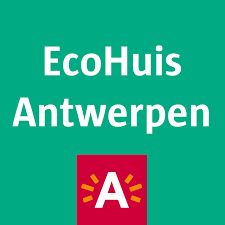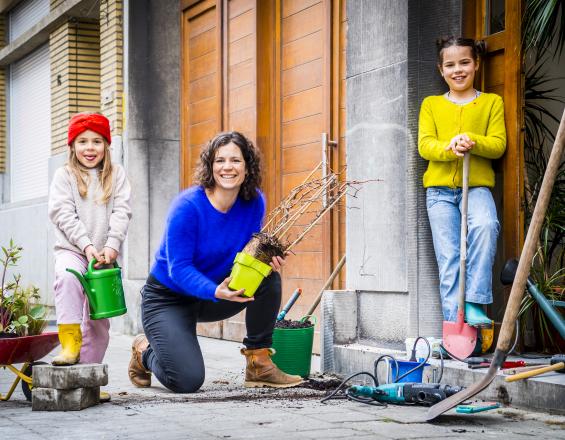
Cambio de pavimento por plantas: la ciudad de Amberes se renueva gracias a la participación ciudadana

Un problema común en el paisaje urbano es el de las superficies duras e impermeables, como aceras, edificios de hormigón o carreteras de asfalto, que impiden la infiltración del agua de lluvia en el suelo. Esto tiene el efecto de aumentar el riesgo de inundaciones al tiempo que limita la recarga de las reservas de aguas subterráneas. Las superficies duras y grises también retienen grandes cantidades de energía térmica y contribuyen al efecto de isla de calor urbana.
En cambio, las plantas, los árboles y los espacios verdes pueden interceptar el agua y permitir que se infiltre en el suelo. Gracias a la evapotranspiración y a la sombra que proporciona, la vegetación puede contribuir a refrescar el entorno urbano.
Para reducir el área de superficies impermeables, la ciudad de Amberes organizó la iniciativa "Break Out" (en flamenco: BreekUIT), que concienció a los ciudadanos sobre este problema a través de una serie de seminarios web y les animó a desempedrar sus propiedades. Por cada 0,1 m² de superficie dura que los ciudadanos retiraban en su patio, terraza, fachada delantera o trasera, recibían a cambio una planta gratis.
Impactos
En la primera edición de BreekUIT han participado 496 ciudadanos y 30 organizaciones, escuelas y empresas para hacer la ciudad más verde, más sana y más salvaje. Entre todos retiraron unos 3.888 adoquines, pavimentando una superficie de más de 3.740 m². En su lugar se plantaron 11.633 plantas. Los participantes pudieron elegir entre 25 especies de plantas en función de las condiciones de su propiedad (por ejemplo, sombra o sol). Las especies vegetales se seleccionaron cuidadosamente para aumentar la biodiversidad autóctona. Por ejemplo, se incluyeron varias plantas con flores para ayudar a las comunidades de polinizadores.
A través de una serie de seminarios web educativos, los participantes conocieron las medidas adoptadas por el Ayuntamiento de Amberes para reforzar la resistencia al cambio climático e impulsar la biodiversidad. También aprendieron cómo ellos, como individuos, pueden ayudar a que su ciudad sea más verde, más sana y más silvestre, entre otras cosas depurando sus propiedades.



